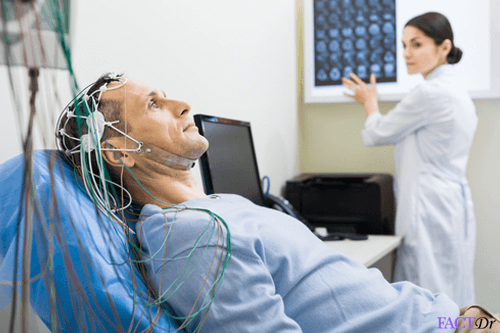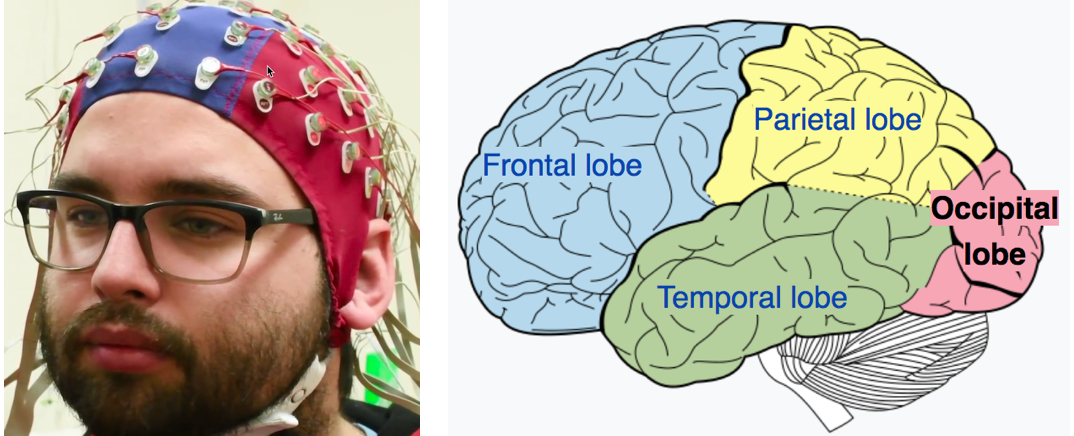

Once wires are applied you will not be able to remove clothing over your head. The electrodes plug into a small recording unit called a headbox that is worn crossbody or in a small backpack. We ask you arrive in a shirt that either button downs or zips. The wires are covered with netting and a bandana. Setup for the test takes approximately one hour and requires a technician pasting 25 small electrodes onto the surface of the scalp using a sticky, water-soluble paste. Once your test is completed and equipment is returned, your neurologist will compare your brain waves to what is considered normal for your age. This test is similar to a regular EEG, as described above, except without video. A sleep-deprived EEG takes about 1-2 hours. Do not eat or drink anything containing caffeine between midnight and the time of your test. This test is similar to a regular EEG, as described above, except that you will be asked to achieve 4 fewer hours of normal sleep or as directed by your provider prior to your exam time. Arrange for daycare of other siblings other children besides the patient are not allowed in the room during EEG testing.Do not use any hair styling products, including oils, prior to the test.Continue to take any medications prescribed by your doctor or advanced practice provider (we will ask you to list your medications prior to your EEG).To prepare for an EEG, please do the following: We offer amenities to accommodate clean up with shampoo/conditioner, blow dryer, combs, and curling irons. Clean up will be necessary after your test. The test involves pasting up to 27 small disc electrodes in various locations on your scalp. This painless test measures the electrical activity given off by your brain. A mask will be provided to you if you do not have one.Ĭlick here for more information on the policies in place for the health and safety of our staff and patients. Masking Policy: Patients are required to wear a mask for the duration of their time in our clinic. 1 parent/guardian for patients under the age of 18.Visitors are only permitted under the following criteria: No visitors are allowed during EEG testing.Visitors will be asked to wait in their vehicles, or outside of the building. Visitor Restrictions: A no visitor policy has been implemented, with limited exceptions.

COVID-19 Visitor & Masking Policy for EEG Testing

Refer a Patient for EMG / Nerve Conduction.Electromyography (EMG) & Nerve Conduction Studies (NCS).Refer a Patient for EEG or Evoked Potential.Prepare for Your EEG & Sleep-Deprived EEG Test.Refer a Patient to Minnesota Diagnostic Center.MRI & Other Diagnostic Imaging Services.Prepare for Your Neurological Consultation.Your doctor will let you know if you need to stop taking any of your medicines beforehand. It’s also best to avoid food or drinks that contain caffeine (including coffee, tea, cola and chocolate) for at least 8 hours before the test. Avoid using conditioners, hairsprays, styling gels or other hair products. Wash your hair the night before or the day of the test, so that the discs stay attached to your scalp. Sometimes EEGs are conducted when you have purposely been sleep-deprived. You may be asked to do some deep breathing, look at a flashing light or sleep during the test.Īn EEG takes about an hour, but may be longer for a sleep recording. You will need to keep still during the test. You won’t feel any sensations from the discs.

These discs are also attached to wires that send the electrical signals to a computer to record the brain waves. They are usually kept in place with a sticky paste. What does an EEG test involve?ĭuring the EEG, flat metal discs (electrodes) will be placed all over your scalp. Although an EEG is one of the main tools for diagnosing epilepsy, a negative or normal EEG test does not necessarily rule out epilepsy.


 0 kommentar(er)
0 kommentar(er)
